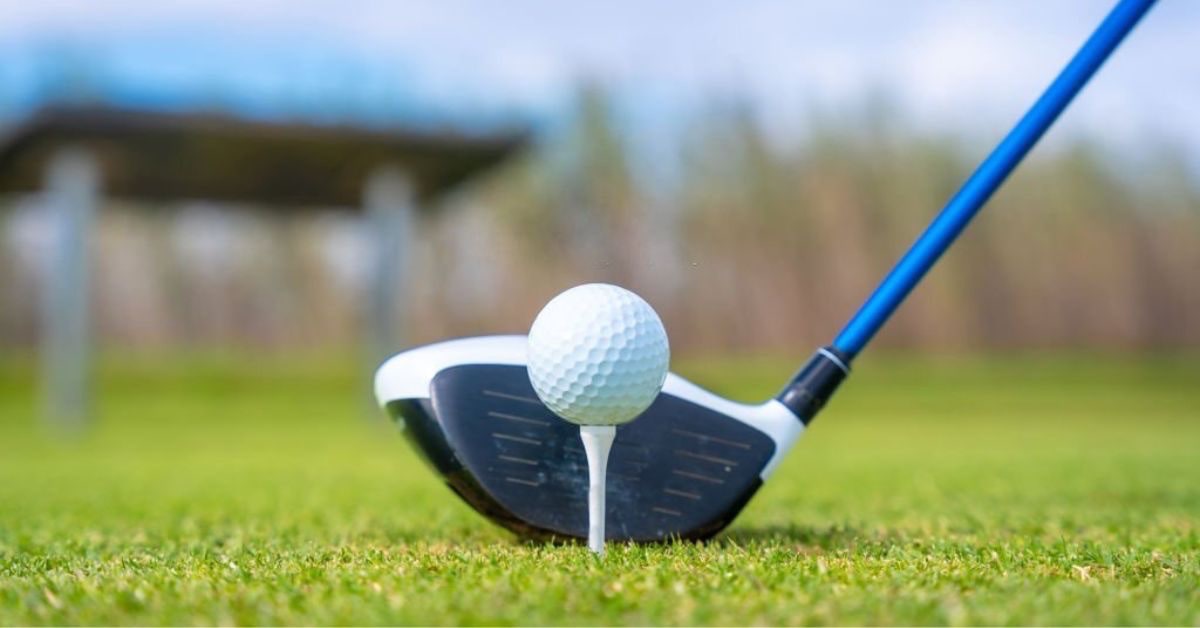When you strike a golf ball with your driver, the attack angle has to be positive if you want to get the most distance out of your swing.
As golfers, this can be a difficult concept to get your head around. We’re taught to hit down on the ball with every other club in the bag — but this is vital!
In this article, I’ll teach you how to hit up on the driver to unlock more distance.
Specifically, I’ll share 6 simple tips — from setup to swing — that will encourage you to strike your driver on the up, for ultimate distance off the tee.
Ready? Let’s crack on!
How to Hit Up on Driver
To hit up on driver, tee the ball high and inside the line of your front heel. Tilt the trail shoulder slightly down, with your feet slightly wider than shoulder-width apart. During the swing, the driver should bottom out before reaching the ball, striking it with an ascending attack angle.
Today, most drivers have relatively low loft angles of between 9 and 12 degrees.
With such low lofts, it’s vital that you hit up on the driver in order to launch the ball at the optimal trajectory. Otherwise, it will stay too flat and limit your distance.
Here are 6 simple tips to help you hit up on the driver:
- Tee the ball higher
- Ball position forward
- Drop the trail shoulder
- Widen the takeaway
- Stay behind the ball
- Swing through the ball
Let’s dive into each of these in some more detail!
1. Tee the Ball Higher
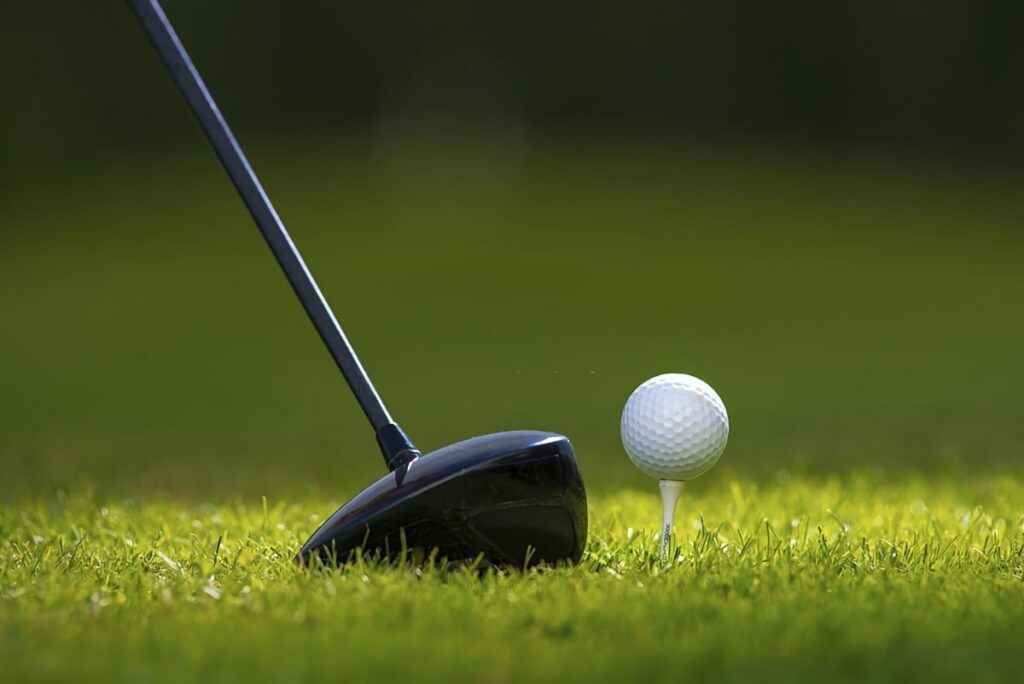
The first (and most simple) way to hit up on the driver is to tee the ball higher!
If you tee the ball too low, you’ll naturally want to hit down on the ball to access the center of the clubface. This will reduce the launch angle, limiting distance.
Instead, tee it high and picture the motion of swinging up into the ball. That way, you’ll strike the ball with an ascending attack angle, with optimal launch.
PRO TIP: When hitting the driver, I recommend you tee the ball so that around half the ball is visible above the top edge of the driver face.
2. Ball Position Forward
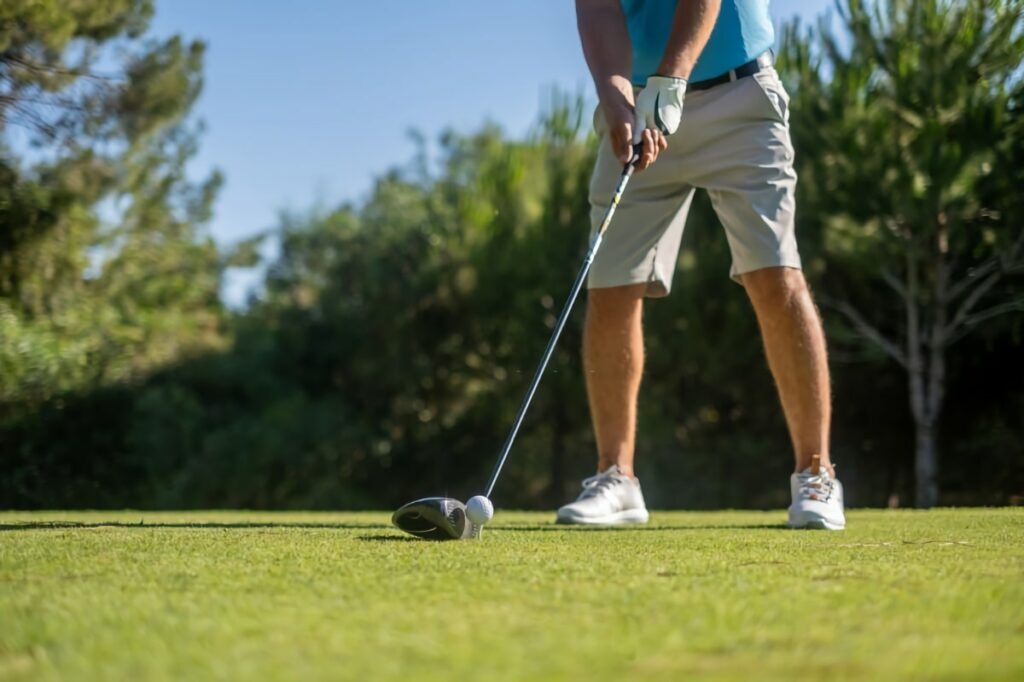
Next, position the ball in line with the inside of your lead foot.
For the right-handed golfer, this is off the inside heel of the left foot.
Effectively, this encourages the driver to bottom out before making contact with the ball. This means the club head will be on the rise at the point of impact, striking the ball with an ascending angle of attack.
To easily find this position, I first like to stand with my feet together and keep the golf ball in between my feet. Then, I take a very small step left with my left foot, and a much larger step right with my right foot.
Once you do this a few times, it’s easier to see exactly where this position is.
3. Drop the Trail Shoulder
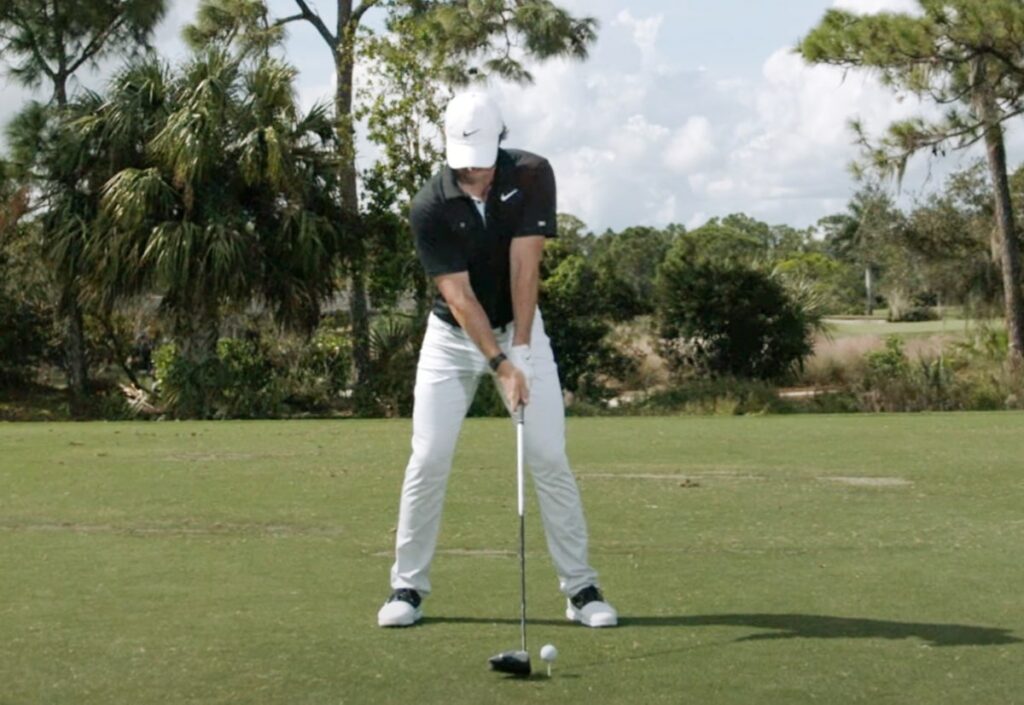
Next, you’ll want to drop the trail shoulder slightly in your setup.
This setup may add a little bit of pressure on the right side of the body, but that’s no problem! This extra tension should enable you to hit up on the driver.
Of course, your trail shoulder will always naturally be lower than your lead shoulder since the hand is positioned lower on the grip.
However, an exaggerated lean will help encourage an upward strike on the ball.
4. Widen the Takeaway

Next, set up with your feet a little wider than shoulder-width apart. Take the club back on a slightly wider arc as you move through the takeaway.
In other words, you won’t want to hinge your wrists right away as this will cause an unhinge, and it can change the attack angle at the ball.
While iron swings are more compact, the driver swing is wider and smoother.
5. Stay Behind the Ball

When swinging toward the ball, you want to make sure you are transferring your weight to the left side — but keep your head behind the ball.
If you start to move your head in front of the golf ball, that’s when you hit those slice shots to the right or even pop up your driver.
Just because you are hitting up on the ball does not mean you want to lose your swing plane or path. Stay behind it, and stay powerful through impact.
6. Swing Through the Ball
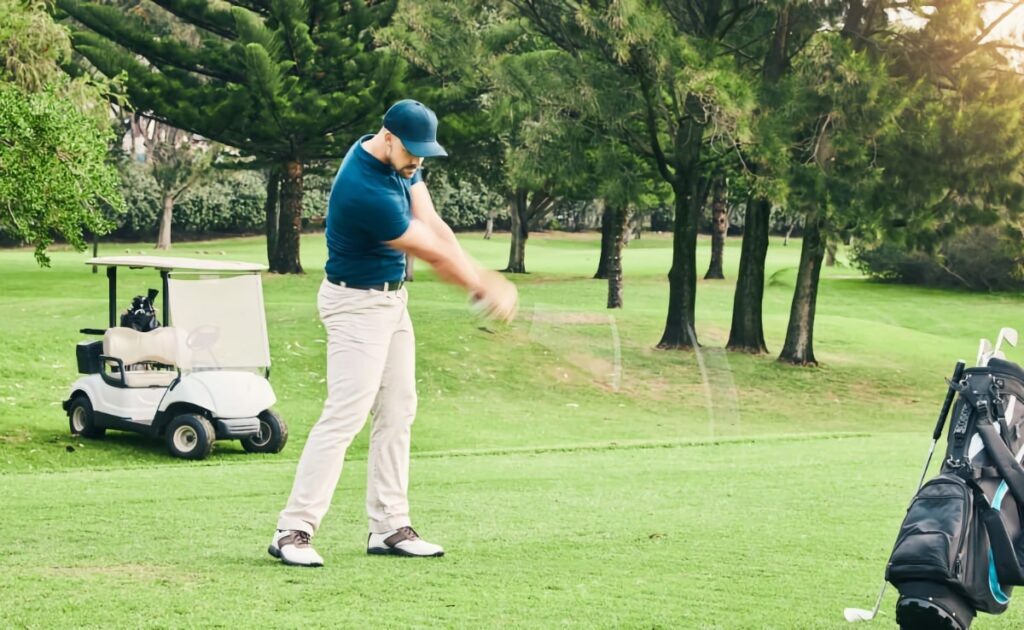
Finally, always be thinking about swinging the driver through the ball.
If you’re trying to just hit at the ball, you’ll likely not generate enough club head speed to get the ball launching at the optimal trajectory.
Instead, work on swinging through the ball with a complete follow-through.
If you do all of these things, you should be able to hit up on your driver without really changing your golf swing. Golf is hard enough — we don’t need to have too many different swings. Instead, we can make adjustments to the one we have!
Check out the video below for a demonstration on how to hit up on the driver:
Common Mistakes When Hitting Up on Driver
So, you want to hit up on the ball for an optimal launch angle and distance.
It goes without saying, your angle of attack can make or break your drive. At the same time, it can have a significant effect on your club head speed.
Here are a few mistakes that golfers make when trying to hit up on their driver:
- Not teeing the ball high enough — results in a negative attack angle
- Standing with feet too wide — makes it very hard to transfer weight
- Not staying behind the ball at impact — can result in poor contact
- Decelerating at impact — lack of speed makes it hard to launch the ball
- Having too steep of an approach — creates a negative angle of attack
- Not creating enough width in the takeaway — promotes a downward attack
- Standing too close to the ball — makes it hard to swing up on the ball
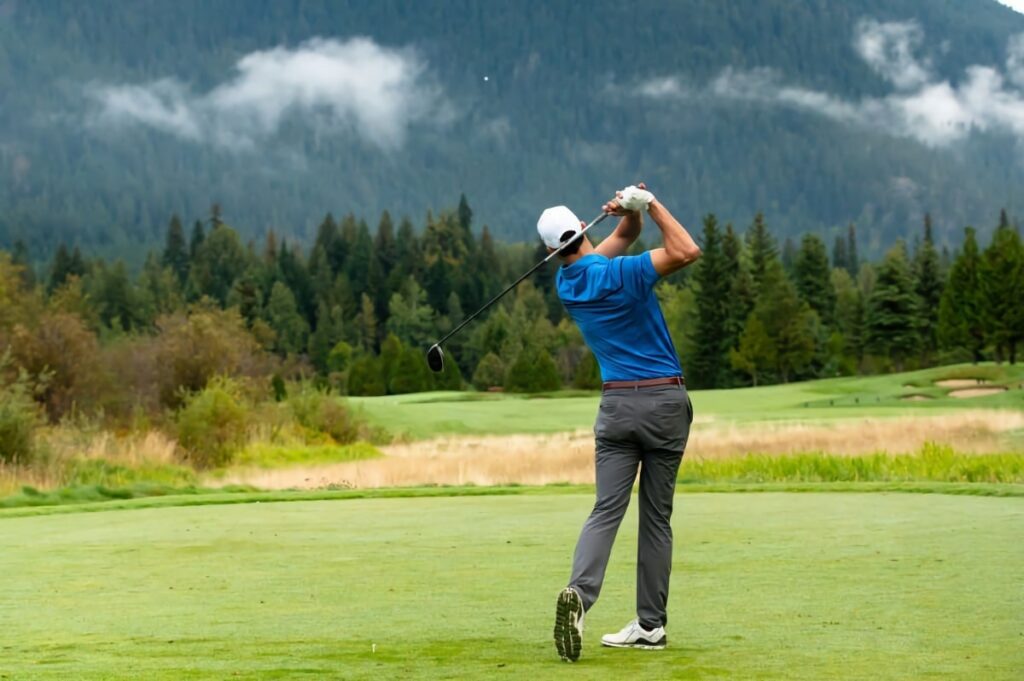
Practice Drills to Hit Up on Driver
Hitting up on a driver can take a bit of a change in your setup, and even the mindset you have when standing over a tee shot.
Here are a couple of useful drills to help you out:
1. Tee Height Drill
The tee height drill is all about exaggerating how high you need to hit the ball.
Take the longest tee you can find and tee it up at the very top.
Effectively, the golf ball will be teed up high enough that you may even have to lift the driver’s head slightly off the ground when you set up behind the ball.
Now, take a swing with about 75% power — hit up and through that golf ball.
The goal here is not to hit your longest drive, just to understand that feeling up hitting up. You’ll notice the trail shoulder position is very important.
2. Strike Spray Drill
With this drill, the aim is to understand where you strike the ball on the face.
Strike Spray is an incredibly handy tool for golfers. Essentially, you spray the face of your driver, and it shows you exactly where you’re striking the ball.
When hitting up on the driver, it’s important to focus on finding the center of the clubface. That way, you can be sure you’re not sacrificing any distance.
PROS
+ Instant shot feedback
+ Dries fast after spraying
+ Bright and easy to see
CONS
– Respraying after each shot

